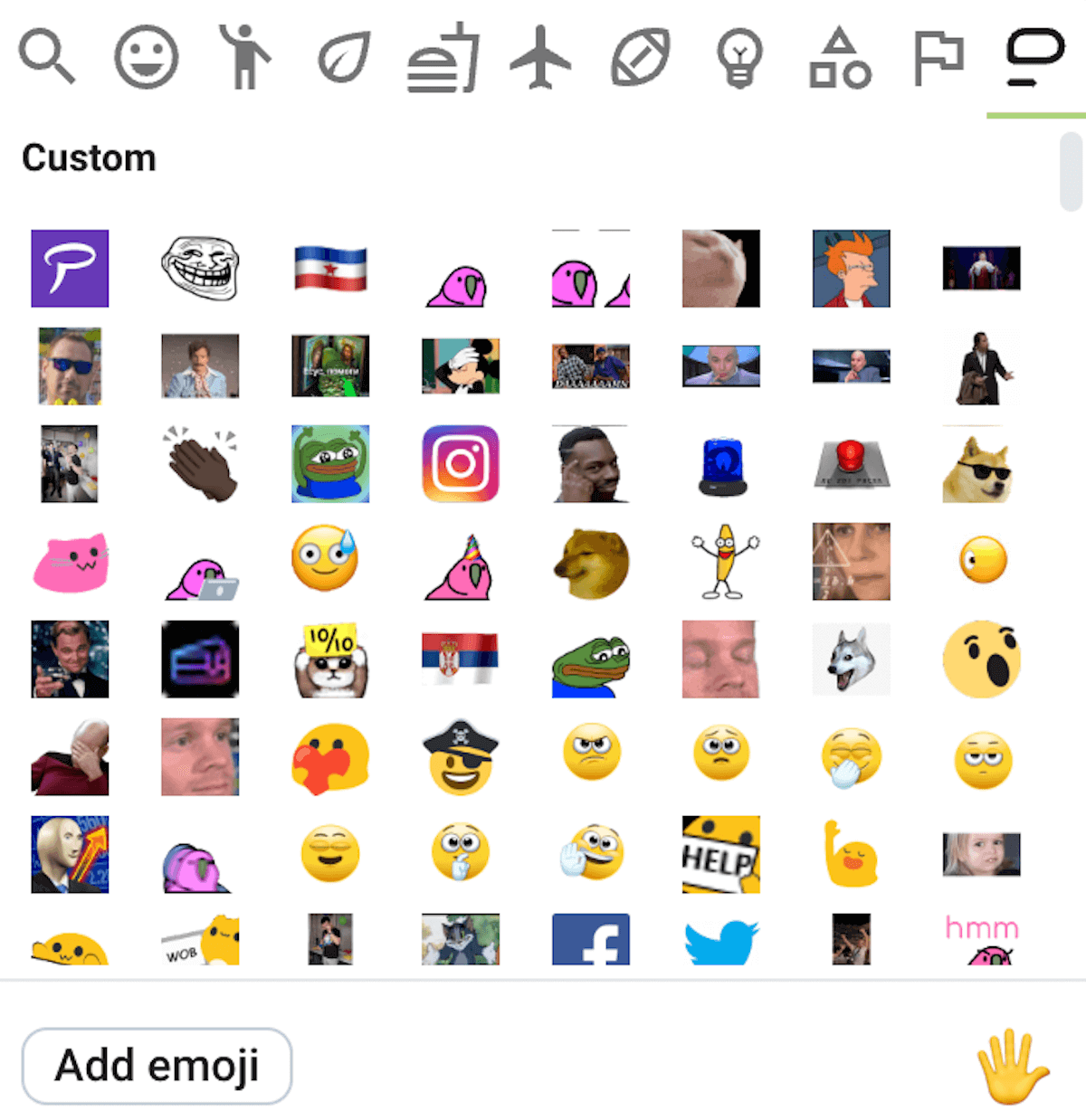How many times have you uttered the following sentences:
“I wish I were better at communicating with my colleagues!”
“I wish it were easier for me to speak my mind at work!”?
If these wishes have at least crossed your mind at some point, trust us, you’re not the only one — a lot of people feel this way on occasion.
Wishes like these are unrefined hopes and aspirations that might or might not come true.
Yet, there is a way to turn unclear wishes into S.M.A.R.T goals.
In the following paragraphs, we will teach you how to set S.M.A.R.T. goals for your workplace communication. First, we will define this type of goals and see why they are important. After that, we’ll provide you with some tips on how to set them, as well as give you a few examples of S.M.A.R.T goals from various industries.
Sure, we cannot promise we’ll make your wishes come true — but we will show you the way to set them more realistically and make them easier to achieve.
So, buckle up, and let’s shoot for the stars!
Table of Contents
What are S.M.A.R.T. goals?
As you have probably guessed, thanks to the capital letters and dots, S.M.A.R.T. is an acronym that stands for the most important characteristics of a goal:
- Specific — the goal should be precise and can be easily defined.
- Measurable — you should have the means for measuring and analyzing your goals.
- Achievable — although it should be challenging, your goal should be realistic, i.e. you should be able to reach it.
- Relevant — your goal should be important for your further development in any of the aspects of life.
- Time-bound — you should set the time frame for achieving your goal.
Like we already said, there is a difference between wishes and goals, the latter being more concrete and specific.
But, are all goals always more concrete and specific than wishes? Or are some goals better than others?
Let’s take a look at popular New Year’s resolutions, which are practically wishes posing as goals, but not well enough defined to be ones.
We all make New Year’s resolutions — but how many of us actually keep them long-term?
According to a study, 30% of us give up on our resolutions by mid-January.
Why is that so?
Well, if we’re not careful, we run the risk of setting our goals too generally or unclearly. That’s where S.M.A.R.T. goals come into play.
So, now that we’ve learned what S.M.A.R.T. goals are, we should strive to use them to improve our workplace communication.
Why are S.M.A.R.T. goals important for workplace communication?
S.M.A.R.T. goals are important for workplace communication for several reasons:
- S.M.A.R.T. goals help you make measurable improvements to your workplace communication skills, even when working remotely.
- Setting specific and measurable goals helps you grasp what you want to accomplish and which segments of your workplace communication you want to improve.
- Goals set in the S.M.A.R.T. way help you determine which techniques are useful for improving your weekly meetings, for example.
- Along with understanding common communication models and how they play out in modern workplace communication, setting S.M.A.R.T. goals is another critical step to planning successful workplace communication.
To get more details on the matter, we reached out to Mark Beal, an assistant professor of Professional Practice in Public Relations at Rutgers University School of Communication and Information. He gave us his expert opinion on the importance of setting S.M.A.R.T. goals for workplace communication:

“SMART goals are critically important for workplace communication because they bring transparency to the employee performance review process and remove any vagueness which is frustrating for employees and often leads to employee resignations. At a company where employees and the employer develop SMART goals in collaboration, it results in a corporate culture featuring a foundation of transparent communication which positively impacts many other elements of the organization.”
In other words, setting S.M.A.R.T. goals enriches your company culture, consequently boosting your productivity.
–
So, now that we’ve seen why S.M.A.R.T. goals are important for the workplace, let’s look at a few tips on how to define them.
Tips on how to define S.M.A.R.T. goals for workplace communication
If you’re unsure of how to define S.M.A.R.T. goals for workplace communication, we’ve got your back. Trust us, it’s not hard, once you pose the right questions for setting these goals. Of course, we’ll help you with the questions.
Let’s start from the beginning.
First, we’ll set a goal that doesn’t fit in our S.M.A.R.T. framework, and, by setting the following questions, we’ll try to make it S.M.A.R.T.
For instance, let’s say our “unsmart” goal is:
“I want to improve my confidence when giving presentations.”
Now, it’s time for a makeover. Let’s “smarten” this goal up!
Specific goals: Questions you should ask yourself
The first letter of our acronym is S, which stands for “specific goals”. A goal that is specific has a much greater chance to be accomplished.
So, to set yourself for success, the first thing you should do is ask yourself the following questions:
- What is my goal?
- How much time will it take me to accomplish my goal?
- How often will I have to work on my goal?
- Where and when will it take place?
- Who is involved?
For instance, if your general (unspecific) goal is to improve your confidence when giving presentations, the specific version of it would be:
“I want to look my coworkers in the eyes when giving the presentation about the new software feature.”
Once you set the specific goal, go through the above-mentioned questions, to check if you’ve covered all of them.
Measurable goals: Questions you should ask yourself
To ease our way into success, when setting goals, we should also keep in mind that the progress should be measurable. The questions we should ask ourselves to satisfy the measurable aspect of our goal are:
- How will I measure my progress?
- Do I have the necessary tools to measure my progress?
- How will I know I have accomplished my goal?
So, if our unmeasurable, generic goal is to improve our confidence when giving presentations, the measurable (as well as specific) version of it would be:
“I want to look my coworkers in the eyes at least five times when giving the presentation about the new software feature.”
After setting this measurable goal, you should go through the questions once again, to check whether you’ve answered all of them.
Achievable goals: Questions you should ask yourself
Moving on to the next letter of our acronym — A, which stands for “achievable.”
How do we make sure our goal is achievable? Simply, by answering the following questions:
- Do I have financial resources for achieving my goal?
- Do I have all the necessary resources to achieve my goal?
- Will anyone help me if needed?
- How much time can I realistically dedicate towards achieving this goal?
Let’s take another look at our improved goal, and see if we can answer these questions.
Since we’re dealing with communication, it’s obvious that we don’t need any financial resources. On the other hand, we do need mental strength as a resource. Now, we just need to make sure someone will help us if we stumble, and assess how much time we have to dedicate to this goal.
Our revised goal may sound something like this:
“I want to look my coworkers in the eyes at least five times when giving the presentation about the new software feature. For that, I will need mental strength. Even if I get cold feet, my colleagues will help me regain my confidence.”
Relevant goals: Questions you should ask yourself
The next letter of our acronym — R — warns us to double-check whether this very goal is really relevant for us.
Let’s consider the questions that will help us decide on the relevance of our goal:
- Why is this goal important to me?
- Is this goal worth my time?
- Is this the right time for it?
So, why is this goal important to you?
For example, this goal may be important because you want to be more assertive in communication, as this will help you in your career. After that, all that’s left for you is to see whether you can answer affirmatively to other questions from this cluster. So, here’s how your S.M.A.R.T. goal may sound like:
“I want to look my coworkers in the eyes at least five times when giving the presentation about the new software feature. For that, I will need mental strength. Even if I get cold feet, my colleagues will help me regain my confidence. I just have to keep in mind that this goal will make me more assertive and help me in my career. ”
Time-bound goals: Questions you should ask yourself
The last letter of our acronym refers to the temporal characteristics of our goal. The questions we need to ask ourselves are the following:
- When will I achieve this goal?
- When will I do the necessary activities that will lead me to the goal?
- When can I expect the first outcomes?
To make our goal truly S.M.A.R.T. we should add a temporal aspect to it.
So, we should formulate our goal to look something like this:
“I want to look my coworkers in the eyes at least five times when giving the presentation about the new software feature next Friday at 3 p.m. For that, I will need mental strength. Even if I get cold feet, my colleagues will help me regain my confidence. I just have to keep in mind that this goal will make me more assertive and help me in my career.”
After all that’s said and done, how can we know that we have succeeded?
Namely, after the presentation, we should feel more confident, if we had managed to realize our first step – to look our colleagues in the eyes five times. That is an excellent first step towards greater confidence and, consequently, improved workplace communication.
–
Before we proceed with the examples of S.M.A.R.T. goals for improving communication for different industries, let’s check out your comprehension of the topic.
A short quiz: Which of the following goals is S.M.A.R.T.?
So you think you can set S.M.A.R.T. goals for improving your workplace communication?
Let’s test your knowledge!
Don’t worry, we have just one question for you, and, if you paid close attention to the tips above, it should be a piece of cake for you.
Which of the following goals is S.M.A.R.T.?
A. I want to improve my confidence in public speaking.
B. I want to improve my confidence in public speaking in the next two days.
C. I want to improve my confidence in public speaking in the next month, and I will achieve that by looking my coworkers in the eyes while speaking, and better preparing for my presentations.
If you chose the third option, you chose the correct answer. Congratulations!
–
Now that you’ve (hopefully) successfully finished this ultra-mini quiz, it’s time for us to give you some more examples of S.M.A.R.T. goals for improving communication in various industries.
Examples of S.M.A.R.T. goals for improving communication in various industries
Since now we are equipped with the right questions for defining S.M.A.R.T. goals, it’s time we give you examples for improving communication in various industries.
Let’s dive in!
S.M.A.R.T. communication goals for software developers
We’ll begin with the software industry — more specifically, with developers.
Let’s say your goal for the next year is to use your communication skills to widen your professional network.
Since this goal is too general, we should better define it by keeping in mind the S.M.A.R.T. framework.
How would that sound?
“I will attend at least one software development conference next year and I will take at least 20 business cards.”
Now that we’ve set the goal, we should check whether it’s S.M.A.R.T.
All we have to do is go through our checklist.
🔸 Is your goal specific? Yes, you have all the necessary details.
🔸 Is it measurable? Yes, you have a goal to obtain at least 20 business cards.
🔸 Is it achievable? Yes, because you’ll probably have plenty of opportunities to go to conferences.
🔸 Is it relevant? Of course, because networking is crucial for advancing your career.
🔸 Is it time-bound? Yes, you have the whole next year to realize your goal.
🔸 How will this goal help you improve your communication? It will provide you with plenty of opportunities to exercise your communication skills while attending the conference.
S.M.A.R.T. communication goals for educators
Moving forward, let’s consider educators and how they can use S.M.A.R.T. goals to improve their communication.
If your goal is to improve communication with your students, you just need to “smarten” this goal up. How do we do that?
“Starting from Monday, I will begin to enhance my understanding of my students, by actively listening to them, asking them questions, and considering their point of view. I will dedicate five minutes at the end of every class to listening to their opinion.”
Let’s go through our checklist:
🔸 Is your goal specific? Yes, it’s clear and well-defined.
🔸 Is it measurable? Yes, every time you discuss something with a student of yours brings you one step closer to your goal. Aside from that, you have dedicated five minutes at the end of every class, which brings you closer to accomplishing your goal.
🔸 Is it achievable? It is, since you’ll have plenty of opportunities to try this approach with your students.
🔸 Is it relevant? Yes, because it helps you improve your relationship with your students.
🔸 Is it time-bound? It is, you have set the day you’ll consciously start to work on your communication skills.
🔸 How will this goal help you improve your communication? This goal will help you build a better relationship with your students since they will get more opportunities to speak their minds and be listened to.
💡 Pumble pro tip
Speaking of teachers and communication, check out our in-depth article on the best communication tools for teachers:
S.M.A.R.T. communication goals for healthcare professionals
According to research, communication between healthcare professionals and patients, as well as among the healthcare workers themselves, is especially important when the patients are dealing with terminal illnesses.
For instance, if a nurse’s goal is to show more compassion to their patients, they need to set S.M.A.R.T. goals.
What is the S.M.A.R.T. example of this communication goal?
“I will spend an extra five minutes with each patient, discussing their personal lives, and trying to find three common interests with them, to distract them from their illness.”
Let’s consider our checklist:
🔸 Is your goal specific? Yes, you have defined your goal in detail.
🔸 Is it measurable? It is, because you have set out to discover three common interests with each of your patients.
🔸 Is it achievable? Yes, because you would spend time with your patients anyway.
🔸 Is it relevant? It is, because empathy is an important part of your relationship with your patients.
🔸 Is it time-bound? Yes, because you have dedicated five minutes to conversations with your patients.
🔸 How will this goal help you improve your communication? This goal will enable you to get better acquainted with your patients and will facilitate your communication with them.
S.M.A.R.T. communication goals for marketers
Believe it or not, research shows that marketers who set goals are 376% more likely to succeed than those who don’t.
However, if marketers want to make double sure that they’ll succeed, these goals have to be S.M.A.R.T.
For example, if you want to better communicate your ideas to your target audience, you need to formulate this goal with the S.M.A.R.T. questions in mind.
What would that look like?
“I want to increase our email open rates by 15% by the end of the year to improve our communication with our target audience.”
Let’s go through our checklist:
🔸 Is your goal specific? Yes, you have specified your goal.
🔸 Is it measurable? It is, because you expect your email open rates to rise by 15%.
🔸 Is it achievable? Yes, because the percentage you chose isn’t so high and the time frame you’ve set is realistic.
🔸 Is it relevant? Certainly, if it’s going to help you reach a higher audience.
🔸 Is it time-bound? It is time-bound, for you have given yourself the deadline — the end of the year.
🔸 How will this goal help you improve your communication? This goal will help you communicate better with your target audience, by reaching them through captivating emails.
💡 Pumble pro tip
To find out more about what words and phrases to use, and what to avoid, check out our blog post about:
S.M.A.R.T. communication goals for sales professionals
In sales, communication is the most important tool of the trade. To sell something, you need to be able to effectively communicate with third parties.
So, to improve communication, you need to set S.M.A.R.T. goals that will bring you success.
If you, for instance, want to enhance your communication with your clients, you should make your goal a bit “smarter”.
Your goal should be something like this:
“By the end of this quarter, I want to improve communication with my customers by asking them at least 3 open-ended questions in each meeting. This will give them an opportunity to share their concerns about the product, and provide me with valuable feedback.”
Now we just need to check whether we have answered all the questions:
🔸 Is our goal specific? Yes, our goal is rich in details.
🔸 Is it measurable? It is, we’ve set the goal of asking at least 3 open-ended questions in each meeting.
🔸 Is it achievable? Yes, 3 open-ended questions per meeting are easily achievable.
🔸 Is it relevant? It is, because improvements in communication will have a positive impact on your sales.
🔸 Is it time-bound? Yes, you have given yourself a deadline — by the end of this quarter.
🔸 How will this goal help us improve our communication? Asking open-ended questions shows people that we care about their opinion and are ready to actively listen to them. It is a useful way to minimize barriers to effective communication.
Pumble can help you set and achieve S.M.A.R.T. goals
If you want to achieve S.M.A.R.T. goals for workplace communication, you need the perfect tool — like Pumble, a team communication app that makes workplace communication easier and more efficient.
For quick and effective communication, we recommend using direct messages and channels. Furthermore, you can also save time by using customized emojis and reactions instead of writing long messages — this will also make your communication efforts more approachable.

Thanks to threads, your communication will always be structured and clear. And, if you ever need to take your communication to the net level, you can schedule a video or audio call with your coworkers or use the guest access feature to invite third parties into your Pumble workspace.

Antoine de Saint-Exupéry once said: “A goal without a plan is just a wish.”
The same can be said for tools as well, which is why you need the right ones — and thanks to Pumble’s various features, S.M.A.R.T. goals look more than achievable.




